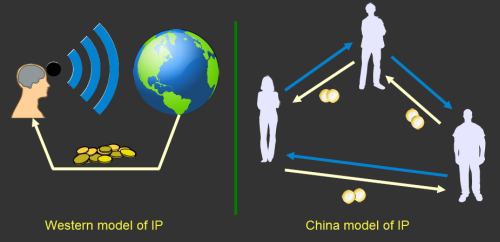Intellectual property
especially in science and technology.
December 30, 2014 — October 5, 2022
Suspiciously similar content
Notes upon scarcity, collaboration, patent trolls, patent minefields, piracy. Bioforge, open source, DRM. This is mostly about technological intellectual property systems, patents, copyrights on code and such like, open source etc. Economic mechanisms to incentivise technological innovation. See also remix and copyright for a perspective on creative intellectual property, innovation for economic models underlying technological intellectual property systems.
One could read a Stallman-citing screed by Samir Chopra for a disambiguation of the different types of intellectual property rights and an argument that even calling them “property rights” as opposed to “temporary leases to extract monopoly rents,” is playing into the hands of Big Trademark. Which might not be wrong, idk, but I think one should pick one’s battles.
Nothing but chaos for now.
This fuzzy, gray relationship between companies and entrepreneurs is just one manifestation of a much broader cultural gap between the East and the West. The West has a “broadcast” view of IP and ownership: good ideas and innovation are credited to a clearly specified set of authors or inventors, and society pays them a royalty for their initiative and good works. China has a “network” view of IP and ownership: the far-sight necessary to create good ideas and innovations is attained by standing on the shoulders of others, and as such there is a network of people who trade these ideas as favours among each other. In a system with such a loose attitude toward IP, sharing with the network is necessary as tomorrow it could be your friend standing on your shoulders, and you’ll be looking to them for favours. This is unlike the West, where rule of law enables IP to be amassed over a long period of time, creating impenetrable monopoly positions. It’s good for the guys on top, but tough for the upstarts.
Should I make a “how Chinese manufacturing works” notebook? because that is fascinating in its own right. e.g. How to make millions of hoverboards almost overnight:
Behind her were stacked cardboard boxes labelled “Kaiser Baas,” the same boxes that had been at Gaoke. Perhaps Kaiser Baas buys boards from both factories. Perhaps one factory sells boards to another. Perhaps one factory sells parts to another. Perhaps both factories buy parts — or just boxes — from a third factory. […] Many such permutations exist among all the factories floating in this strange, extraordinary bubble, which people halfway around the world have the power to pop at any time.
Taken to the point of pathology, Your brilliant Kickstarter idea could be on sale in China before you’ve even finished funding it.
1 Incoming
- AI Data Laundering: How Academic and Nonprofit Researchers Shield Tech Companies from Accountability
- Quasi-open-source biotechnology: Bios by the people who brought you…
- Open patent systems
Review of economic models of incentives, property rights and innovation via Kevin Bryan:
C. Shapiro (2007), Patent Reform: Aligning Reward and Contribution (Shapiro 2007)
Models of Innovation I: The Patent Race has a lot of papers discussed which I should file one day.
I’ve been going through some old literature on innovation again as part of a current project, so I figured I ought put up a little review of this literature. I’ll cover five strands: the patent race, the partial equilibrium/auction, the quality ladder, sequential innovation a la Scotchmer and Green, and bandit experimentation.
Brian Cantrill, Open source confronts its mid-life crisis dives into some of the optimal licensing questions.
The Developer Certificate of Origin is a great alternative to a CLA

